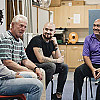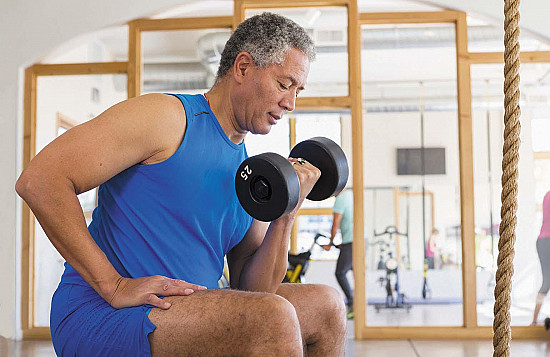Building stronger legs
Strong legs are the foundation for an active and healthy life. Here's how to keep them up to the task.
- Reviewed by Howard E. LeWine, MD, Chief Medical Editor, Harvard Health Publishing; Editorial Advisory Board Member, Harvard Health Publishing
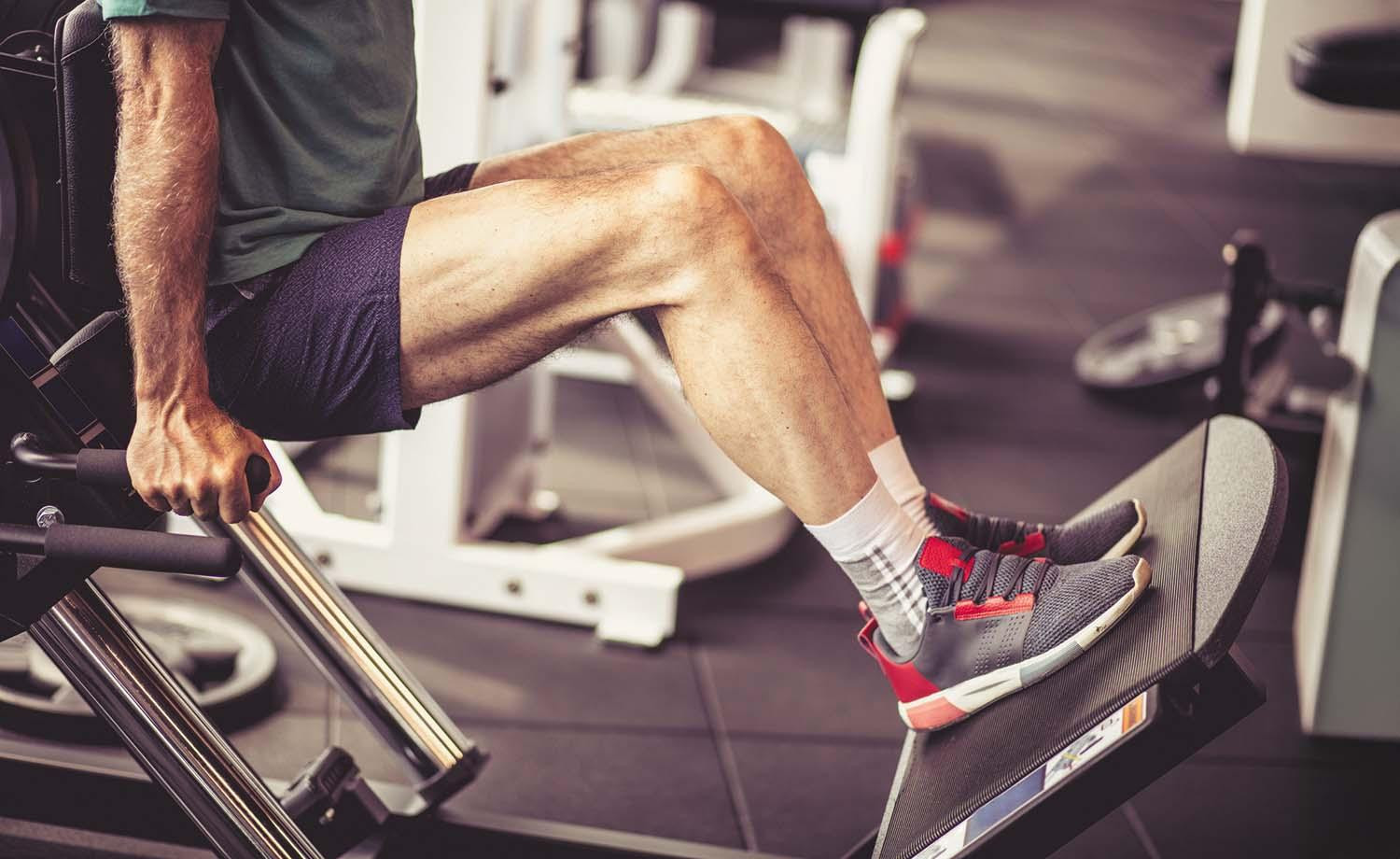
Legs are the heavy lifters when it comes to staying active. “As you age, leg strength becomes even more vital, since your legs are essential for routine movements like going up and down stairs, sitting and rising from chairs, bending over, and standing up,” says Mara Smith, a certified athletic trainer and strength and conditioning specialist with Harvard-affiliated Mass General Brigham Sports Medicine. “If your legs are weak, your life can literally come to a standstill.”
Strong legs also help protect against falls and other injuries. “Our legs can help catch us when we stumble,” says Smith. “But when leg muscles are weak, we lose that stability and balance, which increases the risk of falling.”
A look at leg muscles
Your legs are powered by four key muscle groups: gluteals, quadriceps, hamstrings, and calves. “While each of these has its own purpose, in their location, size, and actions, they work together to move our bodies from one place to the next,” says Smith. Here’s a look at each one.
Gluteals. The three muscles in the buttocks that make up the gluteals (often called the “glutes”) are responsible for the hip movement and stabilization required for every step you take. They support posture, protect the back from injury, and provide the strength for squatting, jumping, and climbing stairs.
Quadriceps. Also known as the thigh muscles or “quads,” this is a group of four muscles (hence the prefix “quad”) located in the front of each thigh. Together, these muscles flex the hips, extend the knees, and help power leg actions like standing, walking, running, kicking, and climbing.
Hamstrings. The hamstrings are a group of three muscles that run along the backs of the thighs extending from the hip to just below the knee. They enable you to extend your leg behind your body and provide strength and stability for hip and knee movements.
Calves. Two muscles make up the calf, which sits in the back of the lower leg, beginning at the knee and extending to the ankle. They work together to propel you forward when you walk or run and provide ankle stability.
Getting a leg up on heart healthAnother benefit of strong legs: they may protect against heart failure after a heart attack. Heart failure is a condition in which the heart muscle becomes too weak to pump blood effectively enough to meet the body’s needs. About 30% of people who have a heart attack eventually develop heart failure, according to some statistics. Previous research has also suggested that low muscle strength could be a predictor for heart failure after a heart attack. A study in the May 2024 issue of the European Journal of Preventive Cardiology explored this connection. Researchers looked at about 1,000 people who were hospitalized with a heart attack but did not have heart failure prior to admission or develop heart failure during their hospital stay. The patients’ quadriceps strength was measured before they left the hospital. After four years, the researchers found that participants with high quadriceps strength were 48% less likely to have developed heart failure compared with people with low quadriceps strength. The researchers explained that strength of the leg muscles, particularly the quadriceps, is closely tied to overall physical capacity and cardiovascular health. Stronger leg muscles help people remain active, which supports better circulation, blood sugar regulation, and blood pressure control — all of which reduce stress on the heart. They added that it’s possible that quadriceps strength could be a means to identify high-risk individuals after a heart attack, and that leg strength training may help them avoid heart failure. |
Three leg exercises
Despite their importance, leg muscles are often overlooked and undertrained, says Smith. The good news is that leg muscles don’t require extensive exercise to strengthen them. “Just a few focused exercises, practiced consistently, can make a big difference in leg strength and stability,” says Smith.
Here is a three-exercise routine you can add to your regular workouts or do by itself to help build a more powerful lower body. “Consider first working with a personal trainer to learn proper form and reduce the risk of injury,” says Smith. “As you progress, you can do more advanced leg-strengthening exercises like deadlifts, squats, and lunges, which require more stability and technique.”
Bridge (glutes, quads, and hamstrings)
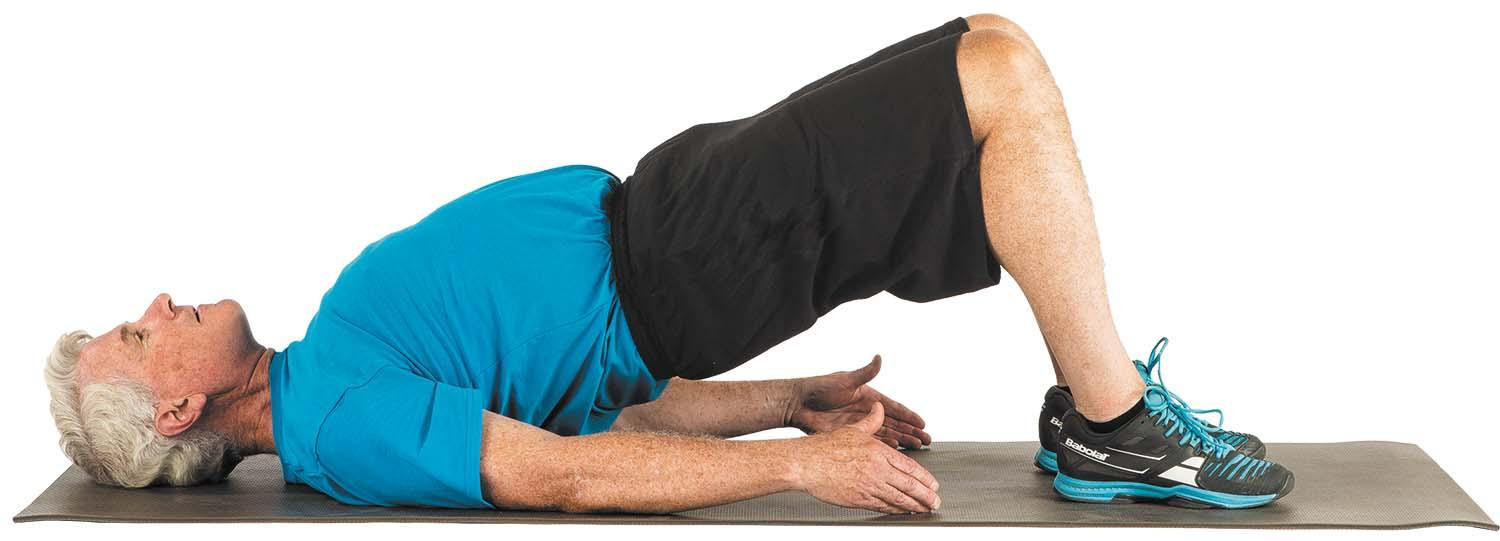
1. Lie on your back with your knees bent and feet flat on the floor, hip-width apart. Place your arms at your sides, and relax your shoulders against the floor.
2. Tighten your glutes and lift your hips until your body forms a line from your shoulders to your knees. Hold the contraction for several seconds.
3. Return to the starting position and relax your glutes. Repeat eight to 10 times for one set. Perform two or three sets.
Make it easier: Lift your hips just slightly off the floor.
Make it harder: Extend one leg straight out to perform single-leg bridges.
Step-ups (hamstrings, glutes)
1. Stand with your feet together facing a low step or at the bottom of a staircase. Use the back of a chair or the staircase railing for balance if needed.
2. Place your right foot onto the step and press through your right heel to lift your body onto the step, straightening your right leg. Your left foot should hover above the ground. Hold briefly.
3. Lower yourself back down with control to the starting position. Repeat eight to 12 times with each leg for one set. Perform two or three sets.
Make it easier: Use a lower step.
Make it harder: Use a higher step, or raise your arms overhead.
Heel raises (calves)
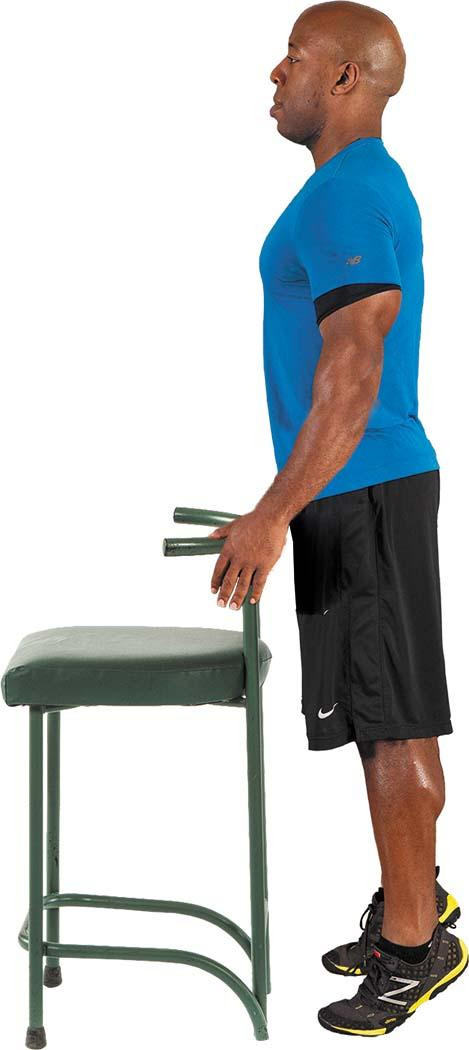
1. Stand with your feet flat on the floor, holding on to a chair or wall for balance if needed.
2. Rise up onto your toes, as high as possible. Hold briefly, then lower back to starting position.
3. Repeat eight to 12 times to complete one set. Perform one to three sets.
Make it easier: Lift your heels only slightly off the floor.
Make it harder: Do calf raises without holding on to anything. Or, perform single-leg calf raises by tucking one foot behind the other calf before rising onto the balls of your feet for each leg.
Image: © Mladen Zivkovic/Getty Images; exercise photos by Michael Carroll
About the Author

Matthew Solan, Executive Editor, Harvard Men's Health Watch
About the Reviewer

Howard E. LeWine, MD, Chief Medical Editor, Harvard Health Publishing; Editorial Advisory Board Member, Harvard Health Publishing
Disclaimer:
As a service to our readers, Harvard Health Publishing provides access to our library of archived content. Please note the date of last review or update on all articles.
No content on this site, regardless of date, should ever be used as a substitute for direct medical advice from your doctor or other qualified clinician.

